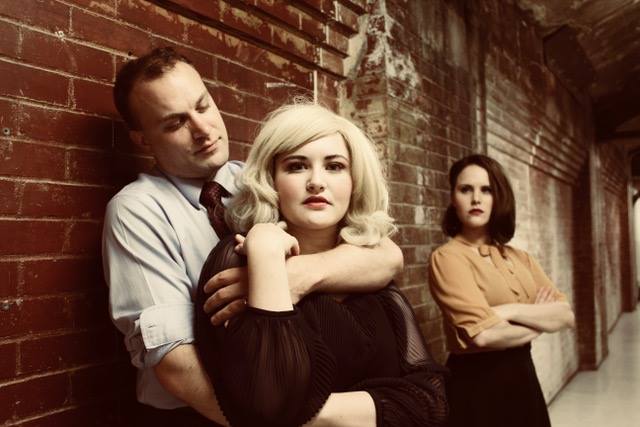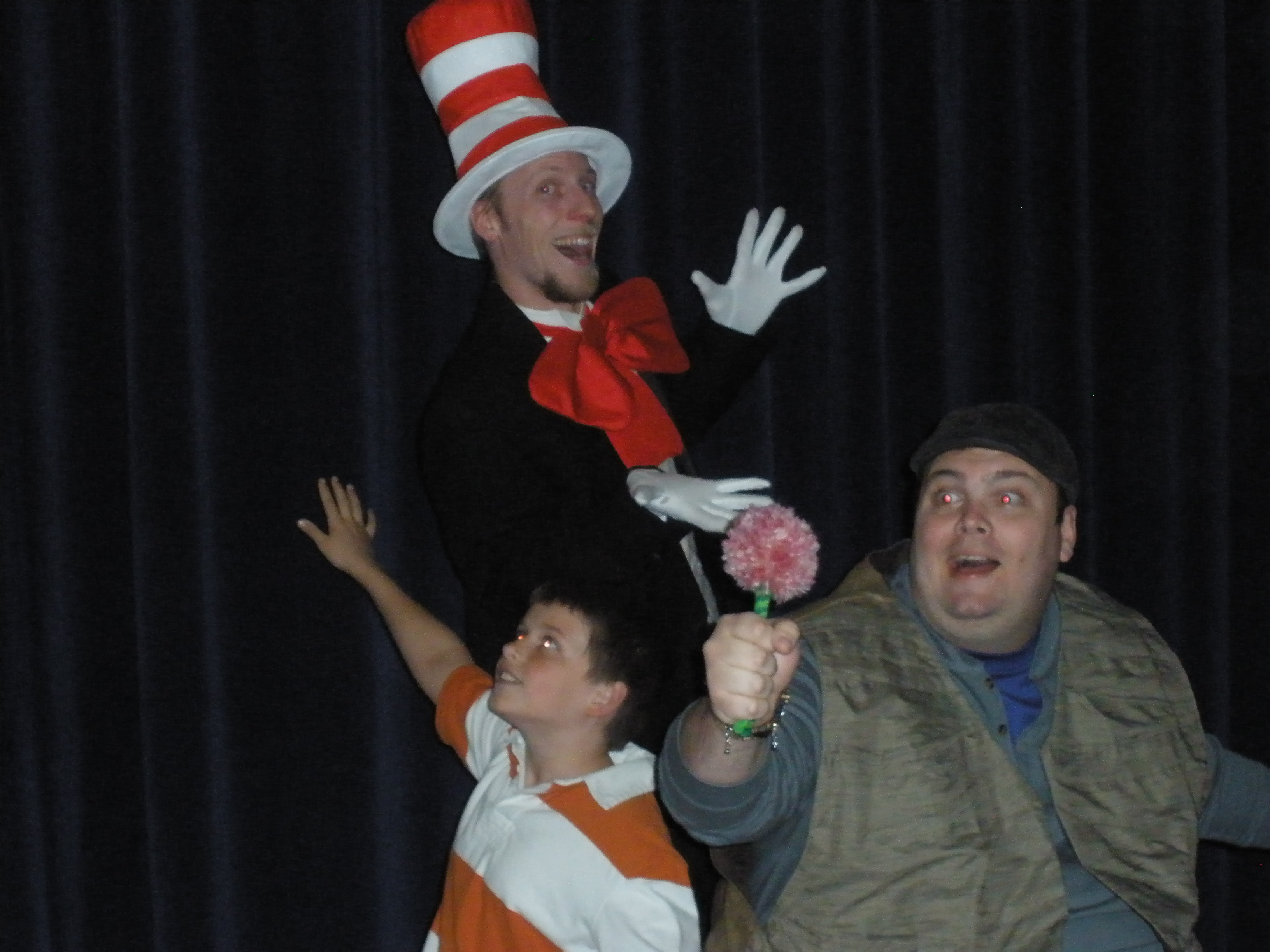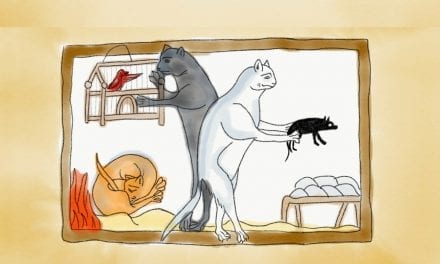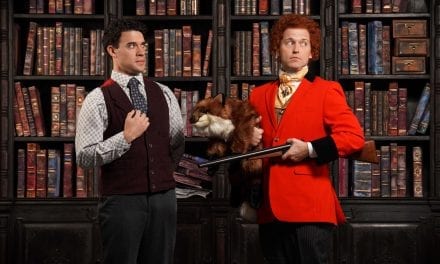SALT LAKE CITY — Jean-Paul Sartre’s existential 1944 satire No Exit is a slow-burning pressure cooker that explores a single ontological notion: “Hell is other people.”

Show closes June 9, 2018.
In the story, three people are trapped in a dowdy, raffishly-appointed room. They have recently died and are now in hell. As the ultimate destination is not what any of them expected, they engage in a discussion about what hell could possibly mean for each of them. The most intelligent of them, Ines (played by Megan Chase), deduces that the trio is to act as torturers for one another, and the pot begins to boil.
No Exit is the premiere production for Sisyphus Theatre Company, a brand new addition to Salt Lake’s performance arts scene. Chase, as Sisyphus’s producer, selected the ideal production for an inauguration. No Exit presents an intimate setting, a cast of four, and a shimmering script perfect for showcasing raw, imaginative talent. Every actor in the cast belongs in this play, and the direction and production are executed with needlepoint deliberation and accuracy. I was lucky enough to sit in on part of a rehearsal and witness the actors, director (Meighan Page Smith), and the lighting designers work their magic. Smith fussed over the placement of a rug and an armchair, making sure everything was exactly right, and the lighting designers chose an upward angle for the actors, making the whole thing look like an extended episode of The Twilight Zone or children telling a ghost story with flashlights under their chins. It was quite fitting.

Left to right: Christopher Taylor as Cradreau, Madeline Thatcher as Estelle, and Megan Chase as Ines. Photo by Amanda K. Smith.
Chase’s Ines was a force to be reckoned with, utilizing intelligence and perception to manipulate and needle the other characters in a sort of wicked little game. Chase played the cruel, calculating Ines with simmering aggression that hovered beneath a layer of languid acceptance not only of herself but of their lot. Her eruptions of rage or displeasure were unlike the other two characters, who seemed to come unglued far more easily. Chase’s smile, like the baring of teeth, gave Ines an elegant and animalistic quality that cast a shadow over the other two. I was swept up in Ines as a character, my favorite moment being Chase stepping up onto a chest to scream at the two other characters about their flaws as they engaged in a round of furious necking.
Christopher Taylor as Vincent Cradeau was a barely-bottled alembic of fury, his emotions blasting out like the brassy, electric blare of a trumpet. Taylor’s posture evoked everything Ines saw in Cradeau: an unmannerly and churlish ape prone to brashly following his male impulses with nary a thought for others. Cradeau’s main concern is how “manly” he appears, and Taylor’s brooding performance and broad brush strokes were applied to the character in a most appropriate manner. Cradeau repeatedly kisses Estelle (played by Madeline Thatcher) in an effort to regain his status after Ines emasculates him, and in doing so is left with her red lipstick all over his mouth. This was a happy accident that I found actually added an element of interest to the play. The characters Estelle and Cradeau are loose cannons of ardor, and having their mouths smeared in red was emblematic of the yawning maw of hell in which they find themselves. The two are nothing but appetite, and they feast on one another like emotional vampires.

Left to right: Christopher Taylor as Cradreau and Zach Vayo as the Bellhop. photo by Amanda K. Smith.
Thatcher’s Estelle was bright, bubbly, and manically cheerful, the infantilized society woman who thinks there has been some mistake in her fate. She is overtly obsessed with how others see her, her narcissism cluing Ines in on precisely how to torture and seduce her. Estelle clings desperately to Cradeau, craving love and validation from a masculine source. Estelle is at times hilarious and frightening, vacillating between the two with a wide-eyed kewpie doll’s lack of awareness that make her crimes in her mortal existence all the more sinister. Where Ines and Cradeau own up to deserving their fate, Estelle is in denial till the end, looping around to an early conversation topic in a reflection of her fragile mental state. Her final tremulous plea for a mirror in which to fix her makeup was played with an edge of humor and terror that few can pull off.
Zach Vayo as the bellhop is not onstage nearly enough. The play, of course, is focused on the three sinners, but Vayo brought a buoyancy to his moments onstage that elevated every scene he was in. The bellhop guides each character to the room, his unblinking eyes mirroring Cradeau’s atrophied eyelids. Vayo’s lilting cackle as he ends his conversation with Cradeau was delightfully creepy. I found myself wanting to know more about the bellhop. Perhaps Sartre wouldn’t mind if I penned a sequel?
It is my belief that the commencement of any new theatre company is to be commended and supported, and Sisyphus has launched a production worthy of such commendation. No Exit is a lot of fun and packs a sizzling punch that will linger for days after watching it.
Donate to Utah Theatre Bloggers Association today and help support theatre criticism in Utah. Our staff work hard to be an independent voice in our arts community. Currently, our goal is to pay our reviewers and editors. UTBA is a non-profit organization, and your donation is fully tax deductible.





